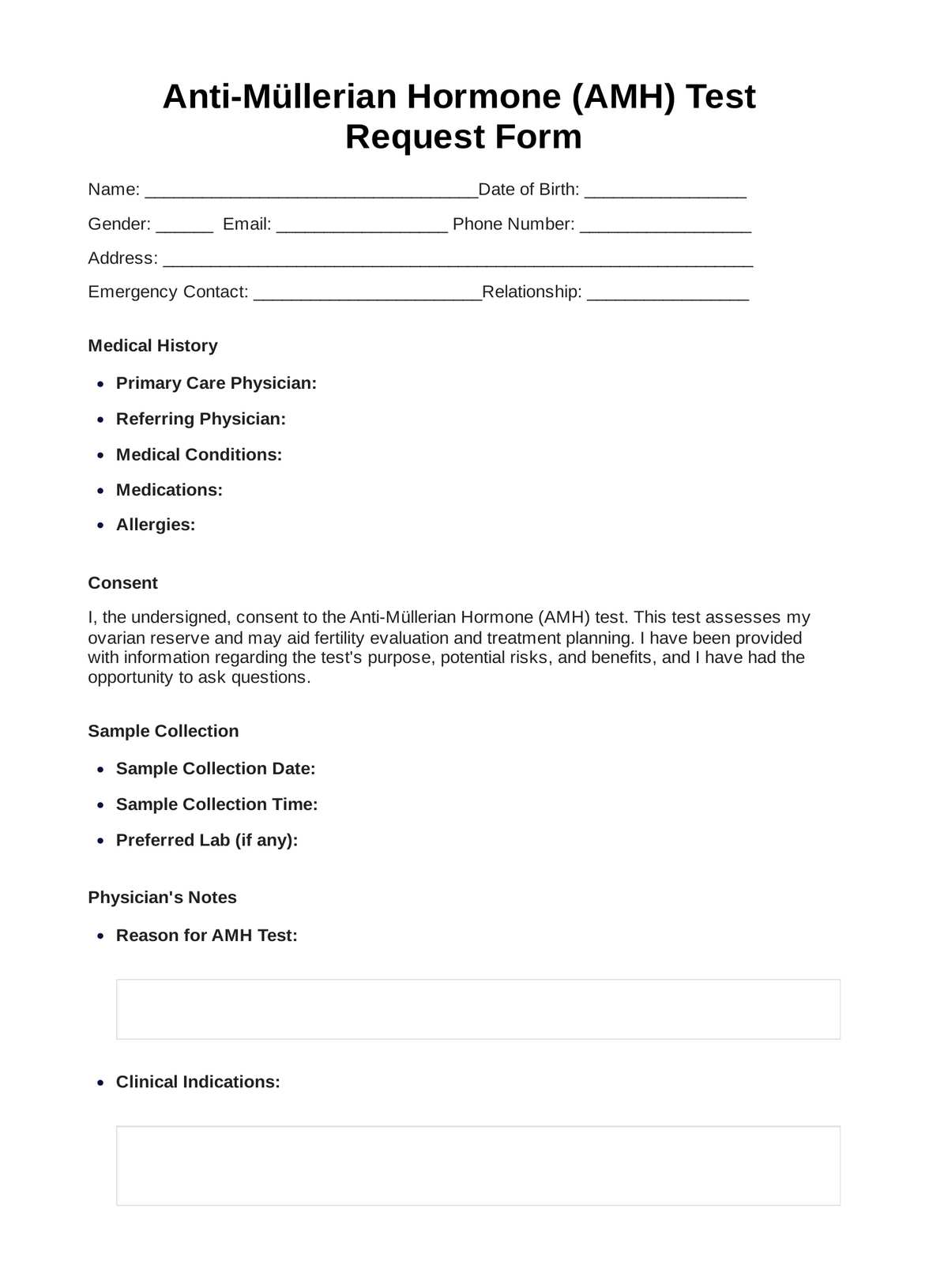Gynecologists, fertility specialists, and reproductive endocrinologists typically request AMH tests. Patients concerned about their fertility may also request one.

Anti-MǬllerian Hormone
Learn about the Anti-MǬllerian Hormone Test, its significance in fertility assessment, and how it's used in reproductive health.
Use Template
Anti-MǬllerian Hormone Template
Commonly asked questions
A blood sample is collected and sent to a lab for analysis. Results help determine fertility potential, guide treatment, and assess ovarian health.
The test itself takes only a few minutes to draw a blood sample. Results are usually available within a few days to a week, depending on the lab and healthcare provider.
EHR and practice management software
Get started for free
*No credit card required
Free
$0/usd
Unlimited clients
Telehealth
1GB of storage
Client portal text
Automated billing and online payments











